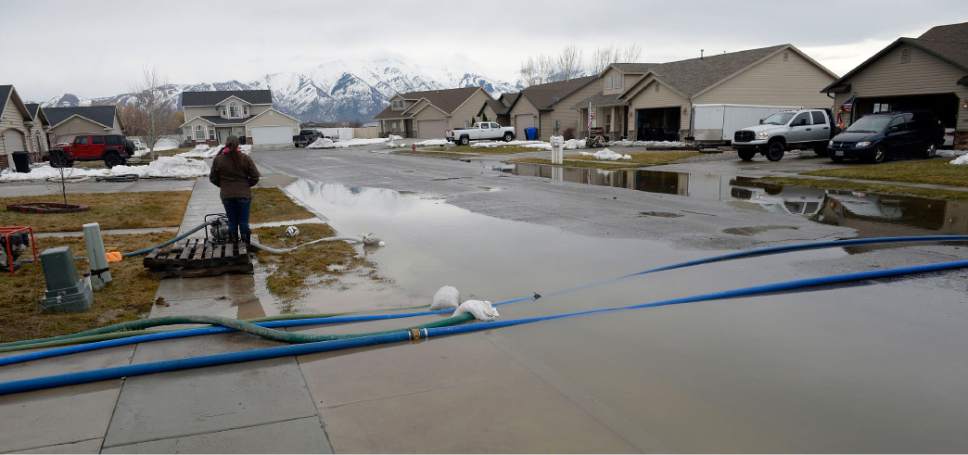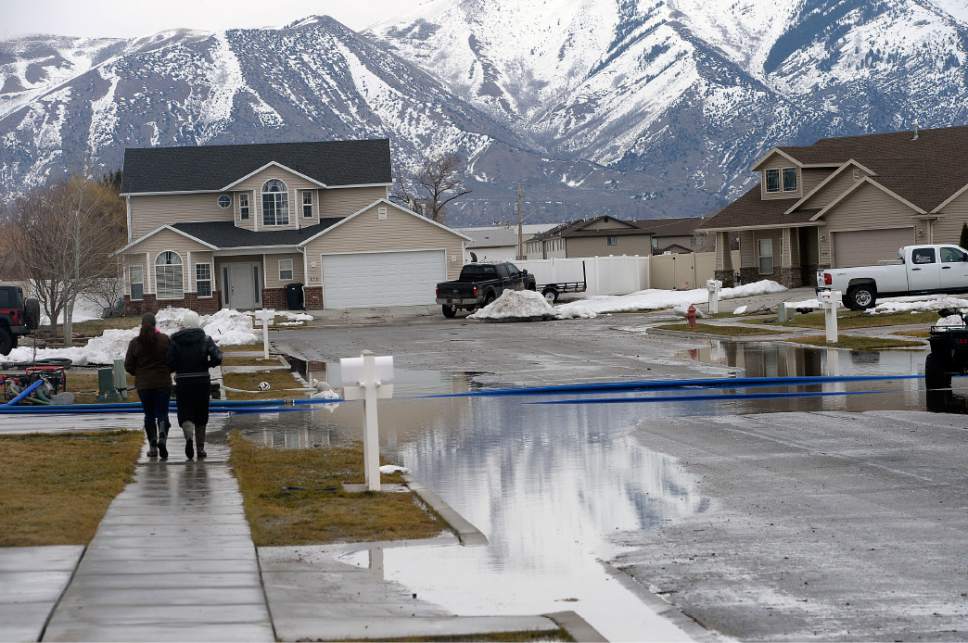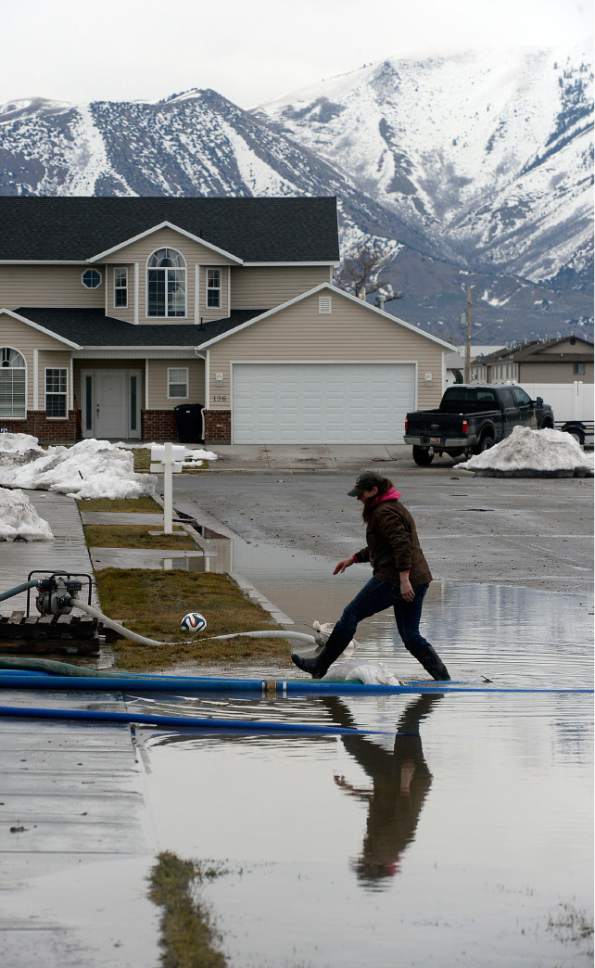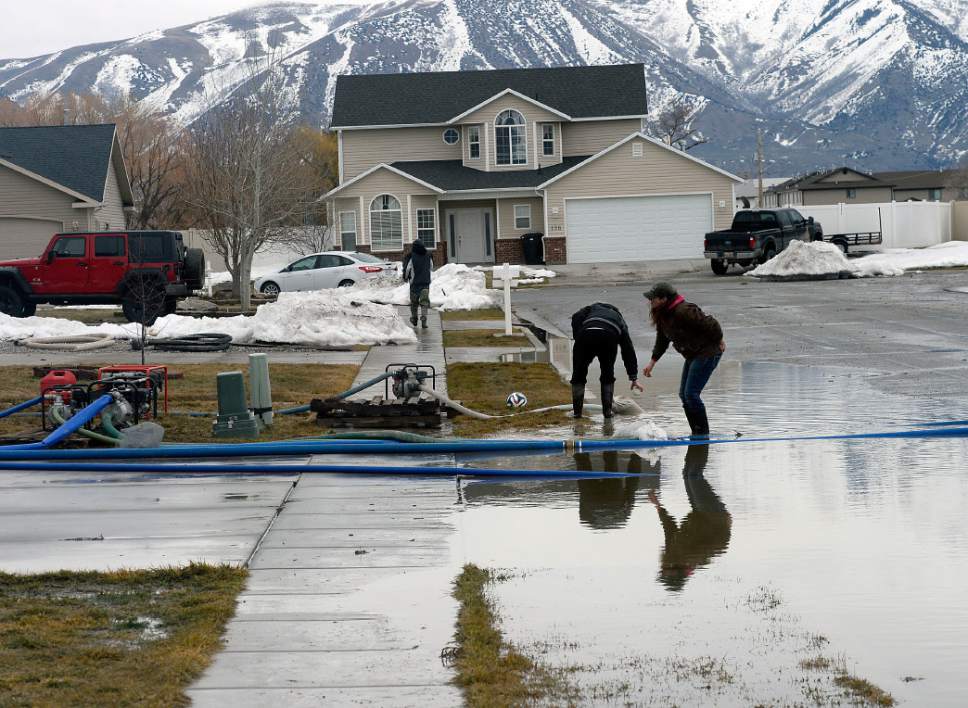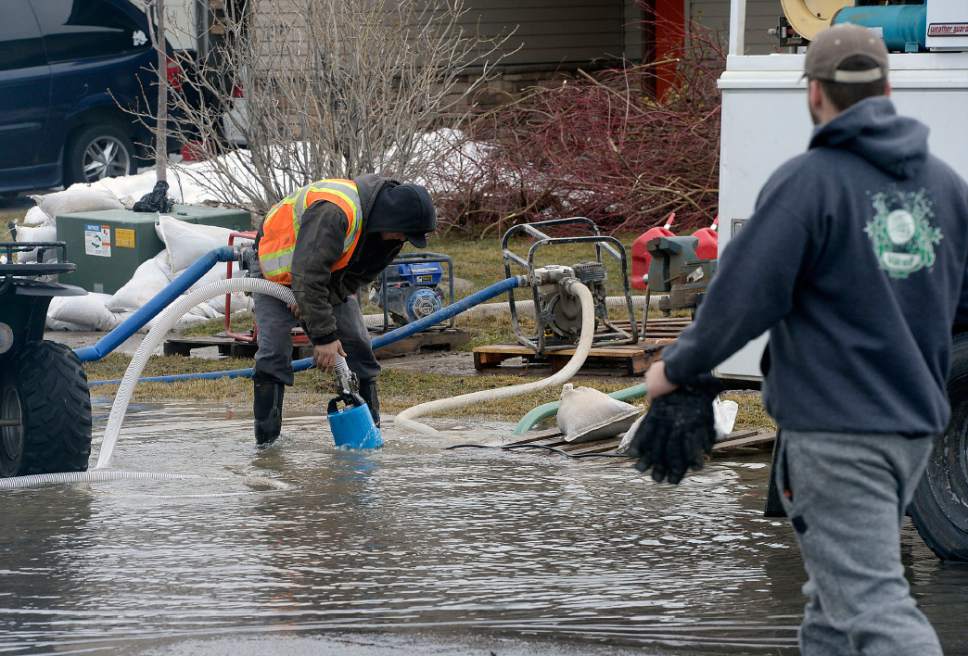This is an archived article that was published on sltrib.com in 2017, and information in the article may be outdated. It is provided only for personal research purposes and may not be reprinted.
President Donald Trump on Friday declared that "a major disaster exists" in northern Utah after the region was socked by severe winter storms and flooding in February.
The state will receive federal assistance to go toward road repairs, Trump announced, after February storms led to flooding in Box Elder and Cache counties.
The federal funding won't be allocated to homes that were damaged by flooding.
And because the majority of the families with damaged homes don't have flood insurance, businesses and individuals have donated money and water to people affected by the disaster.
"I would say less than 5 percent have flood insurance because it was such an anomaly," Box Elder County Commissioner Stan Summers said. United Way is collecting donations for people affected by the flooding, and families can apply for relief through the Red Cross, which will oversee distribution of the donations.
Box Elder County resident Aaron"Kube" Anderson has organized two fundraisers and is planning a third. The two events raised more than $12,000. The third fundraiser, an online silent auction, is scheduled to go live Monday at e.gesture.com/p/fFFtFv/e/5OE. Local corporations and artists donated items for the auction.
The flood damaged at least 250 homes in Box Elder, according to Summers.
"It has probably affected 95 percent of our community," Summers said. "You might not be flooded, but your sister is flooded, or your dad is flooded or your neighbor is flooded. If you're OK, thank your lucky stars that you're blessed, and go help your neighbor."
Winter storms dropped nearly 2 inches of precipitation on the region between Feb. 7 and Feb. 27, and unseasonably high temperatures contributed 3 inches of water from snowmelt, according to the National Weather Service. The combined 5 inches of water — unable to infiltrate the region's claylike soil — ponded in fields, washed over roads and inundated basements in the two counties, said hydrologist Brian McInerney.
Box Elder County declared an emergency Feb. 14, and Cache County followed suit Feb. 15.
The state requested $5.9 million — $3.2 million for Box Elder County and $2.7 million for Cache County — and that amount will be adjusted as damage is assessed, said FEMA spokesman Jerry DeFelice.
Funds will go toward repairing public infrastructure, such as roads and bridges, and to reimbursing the state for debris-removal costs, said Joe Dougherty, spokesman for Utah's Division of Emergency Management. Some of the money is to be allocated to hazard mitigation — projects that strengthen anti-flooding systems — which the state will prioritize, according to DeFelice.
Gov. Gary Herbert requested the federal major-disaster declaration April 7, after various state entities responded to the flooding.
The Utah National Guard was called out to help fill sandbags, and the Utah Department of Transportation responded to road damage and mudslides. The Utah Highway Patrol closed highways and roads while UDOT and area officials cleared debris. The Utah Geological Survey monitored landslides and relayed information to officials about risks and vulnerabilities.
Before and between two major winter storms, the temperature climbed 10 to 15 degrees warmer than the 30-year average, causing the snow to melt, McInerney said. The temperature on Feb. 11 was 21 degrees higher than the 30-year average, he said.
"It's pretty radical weather," McInerney said.



